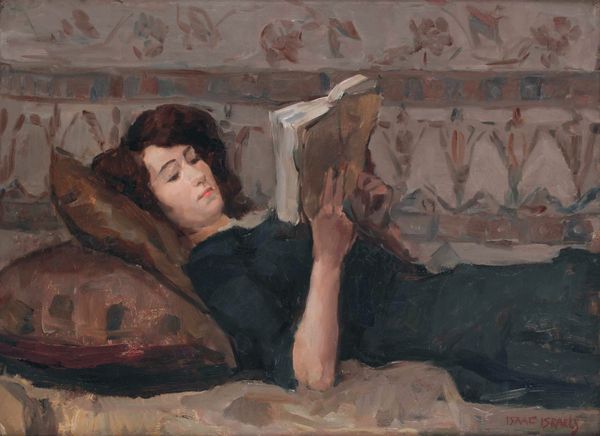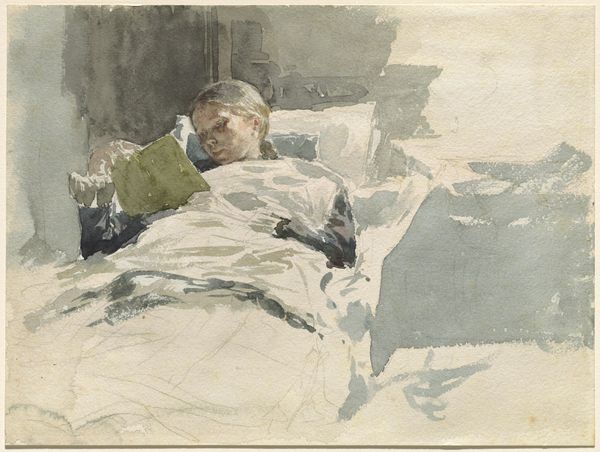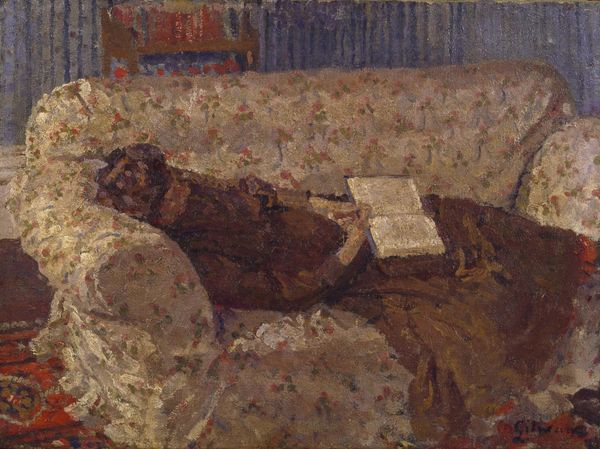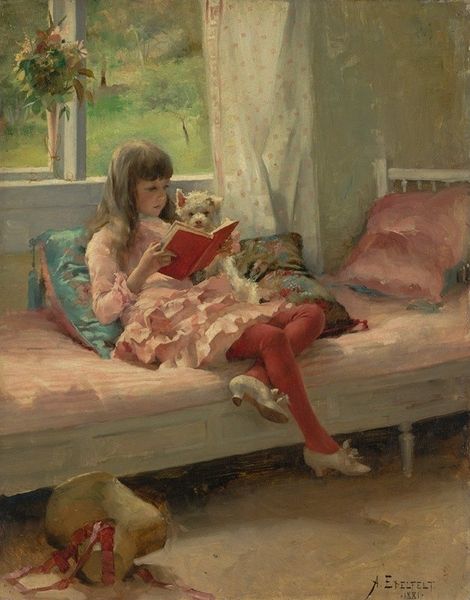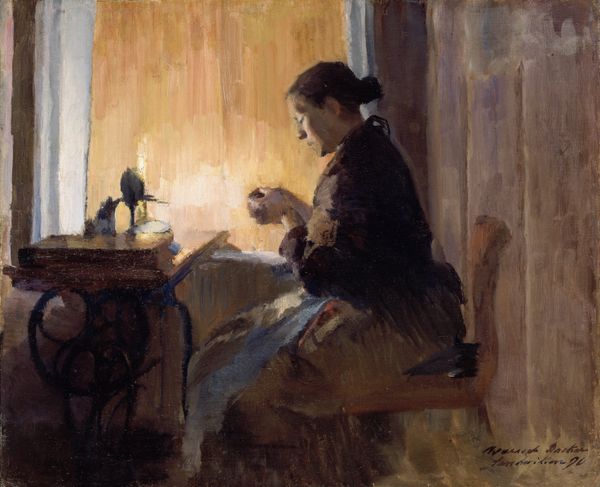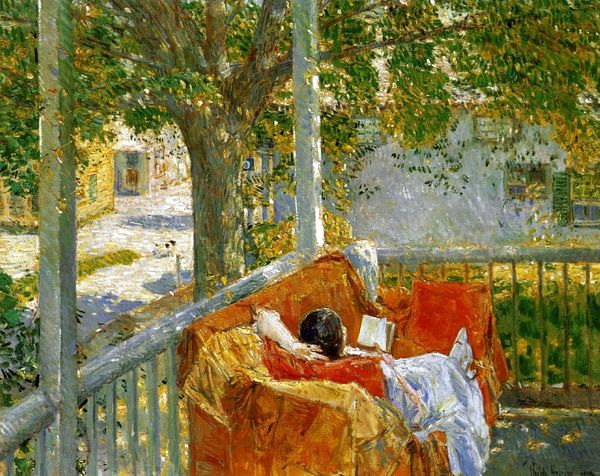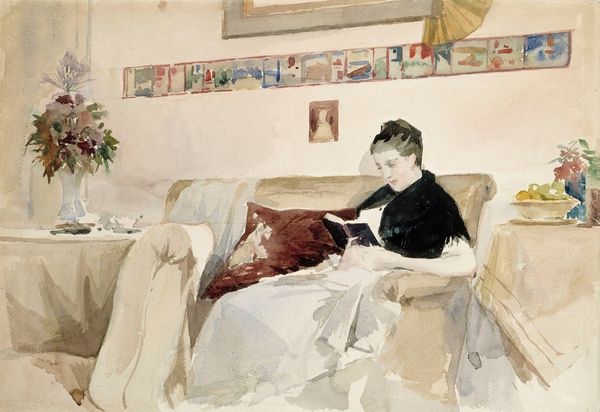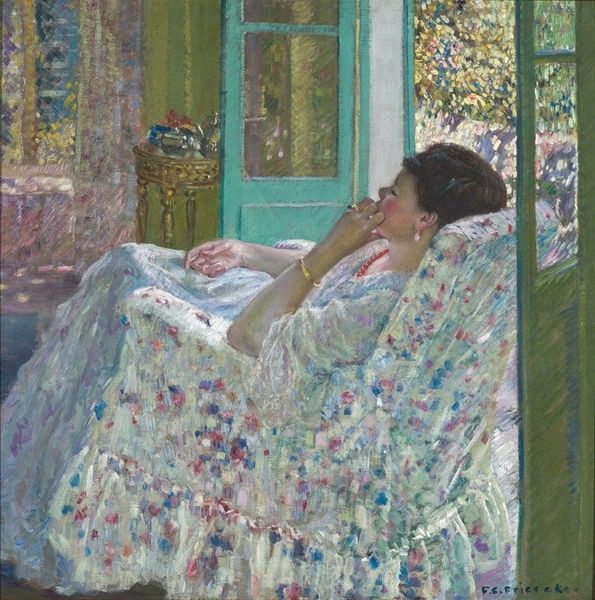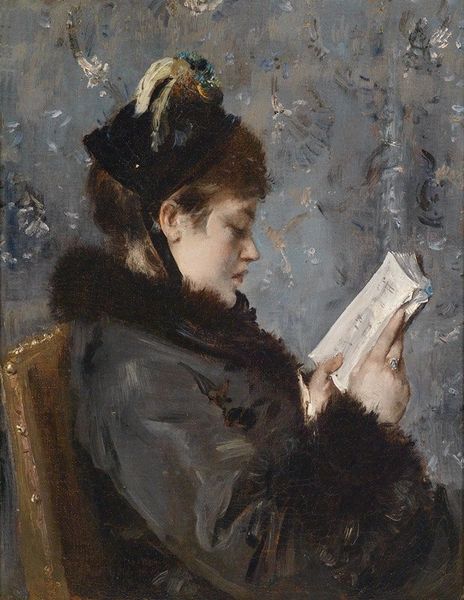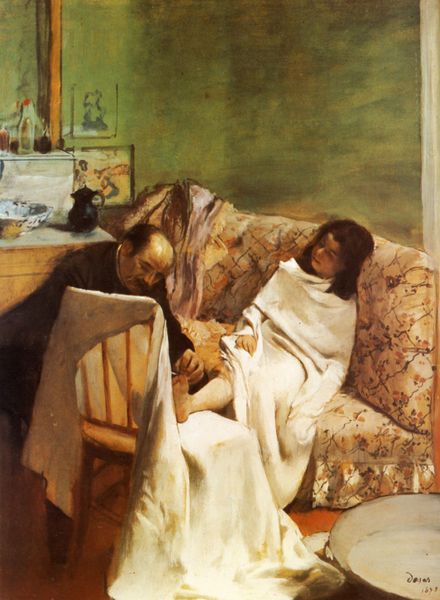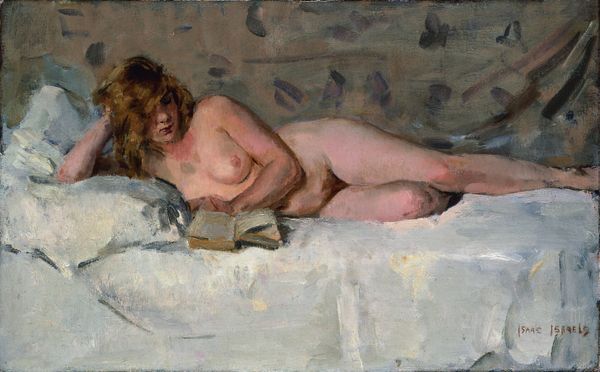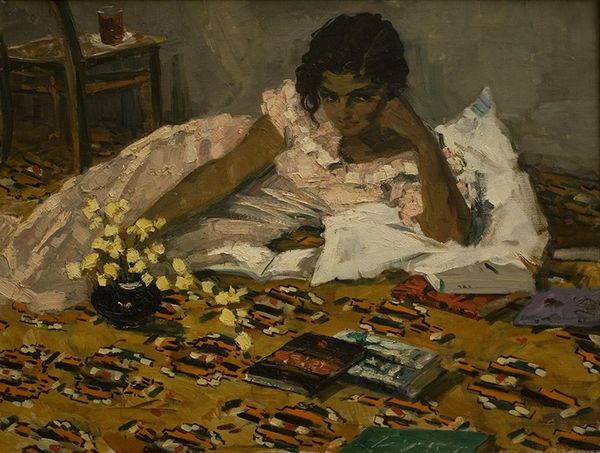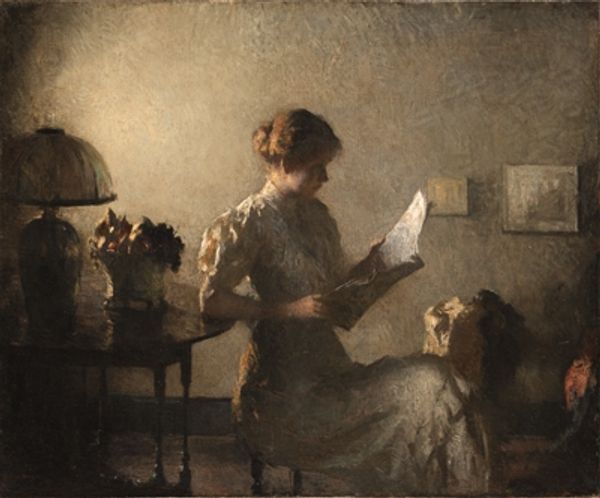
Copyright: Public domain
Georg Pauli's painting, "The Reading Light", presents an intimate scene rendered with soft brushstrokes and a muted palette, primarily whites and dark browns, punctuated by the warm glow of the lampshade. The composition divides the canvas into illuminated and shadowed areas, emphasizing the contrast between the private world of reading and the enveloping darkness. The central figure, a woman absorbed in her book, is bathed in the artificial light. This focus not only highlights her engagement with the text but also underscores the painting's deeper concern with the interplay of light and shadow as a symbolic representation of knowledge and the unknown. The lamp, adorned with floral motifs, casts a gentle, patterned light, suggesting domesticity and interiority. The woman's upward gaze hints at contemplation, drawing attention to the act of reading as a space for reflection and escape. The use of light and shadow serves as a formal device to draw viewers into a psychological space, inviting consideration of how artificial light can transform our perception and shape our understanding of the world. The painting thus functions as a semiotic field, where light, color, and composition converge to create a nuanced exploration of interior life.
Comments
No comments
Be the first to comment and join the conversation on the ultimate creative platform.
